Ultimate Guide to Hair Porosity For Curly Hair
This post may contain affiliate links, and I will earn a commission if you purchase through these links. Please read the disclosure policy for more details.
Hair porosity in the curly world seems to be such a confusing topic with lots of misinformation being shared. I was confused about it for a long time but after a lot of research, I finally understand it. So I created this guide to help you finally understand your hair’s porosity.
First, forget everything you “know” about porosity and read through this whole post. Also, forget about the hair float porosity test because that is simply inaccurate. I thought I knew my hair’s porosity based on that float test but it did not make sense because the results did not match the characteristics of my hair.
Reviewed by Laurie Cain, Curl Specialist and Hair Stylist.
What is Hair porosity?
I’m going to explain hair structure before going into porosity specifics.
Porosity is how easily something absorbs liquid.
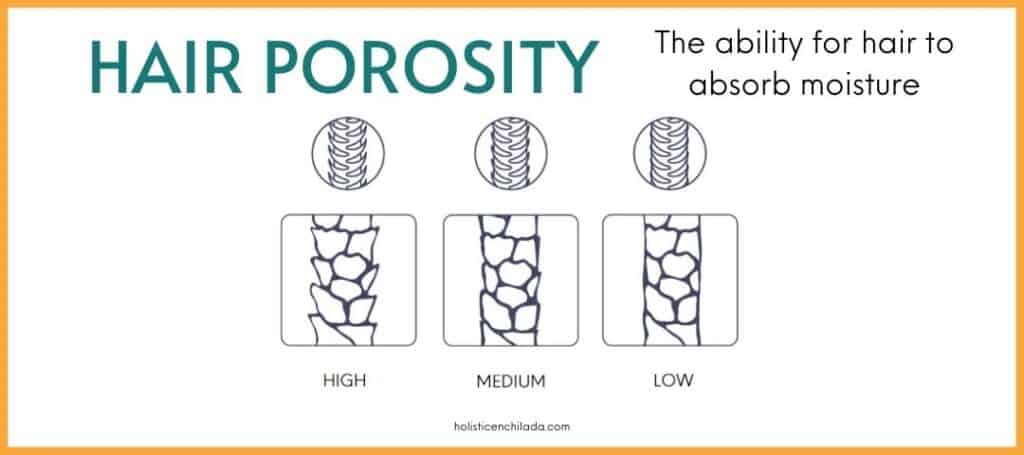
Each strand of hair has a cuticle which is composed of scales that point down towards the ends of your hair. Picture an upside down pinecone to get a visual.
In healthy hair, these scales open to allow moisture in, and close to seal in moisture. How your hair’s cuticles open and close is what determines your porosity.

How to determine your hair’s porosity
To determine your hair’s porosity you need to observe how quickly your hair gets wet.
High porosity hair will absorb water quickly because the cuticles are open, and therefore, your hair will get wet very quickly.
Low porosity hair takes a long time to get wet and repels water because the cuticles are almost closed.
Medium porosity falls in between. Keep reading for more details on each porosity type.
You could also slide your fingers up a strand of hair to see if it feels bumpy or not. This is trickier with fine hair since it is already hard to feel between your fingers. In theory, feeling lots of bumps means you have more porous hair.
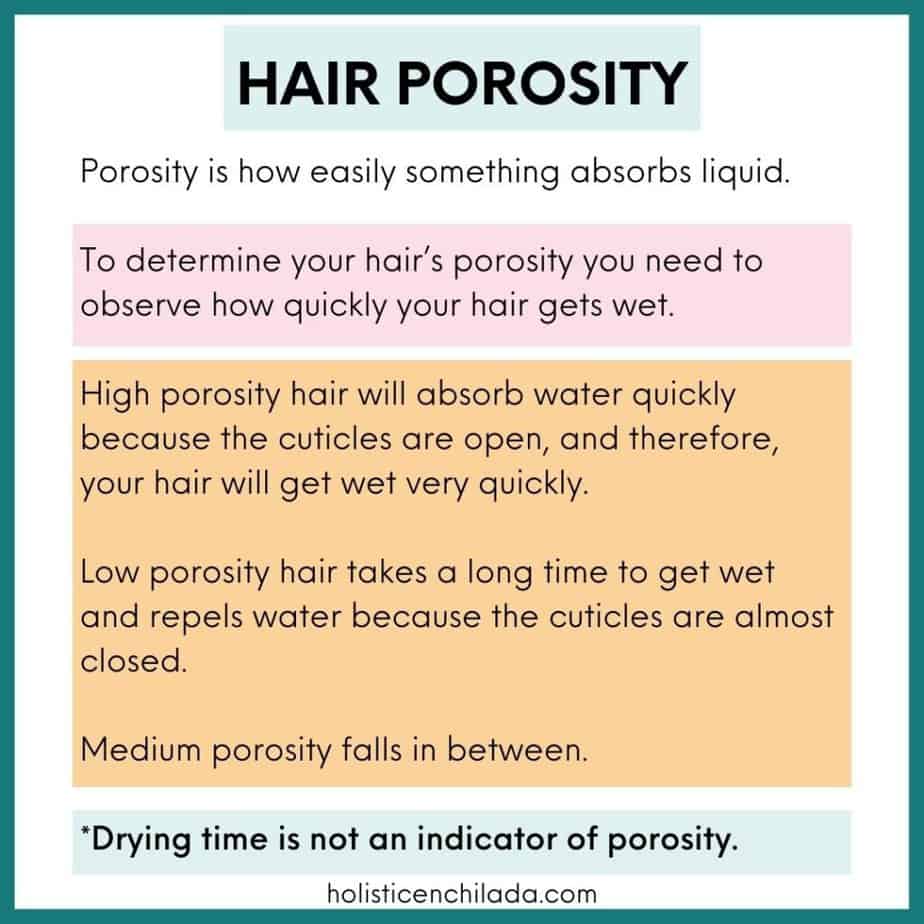
Hair Porosity Test Warning
There is a very popular hair porosity test that involves placing a strand of clean hair in a cup of water and observing if it floats or sinks.
This float test is highly inaccurate so I do not recommend you waste your time doing that.
High porosity hair
High porosity is the most common type of porosity. This hair type has a loose cuticle that opens easily and does not close as tightly as lower porosities. High porosity can be your hair’s natural porosity or it can be caused by processing.
Characteristics of high porosity hair:
- gets wet quickly
- hair is very stretched out when it is wet
- absorbs products easily
- often struggles with volume since the hairs can stick together and water and products weigh down the hair easily
- usually dries quickly since the cuticles are more open, allowing water to escape easily
- but it can also dry slowly because it absorbs so much water, and especially if you have high density hair
- more prone to dryness since the cuticle doesn’t seal in moisture as well as low porosity
- easily over moisturized, again because the cuticle is open, and it can absorb too much moisture from products
- prone to tangling because of the loose cuticle layer
You can see in the image below my high porosity hair is very stretched out when wet which is something that is very common in high porosity hair. Along with checking off many other characteristics of high porosity hair, I know that is the porosity of my hair.
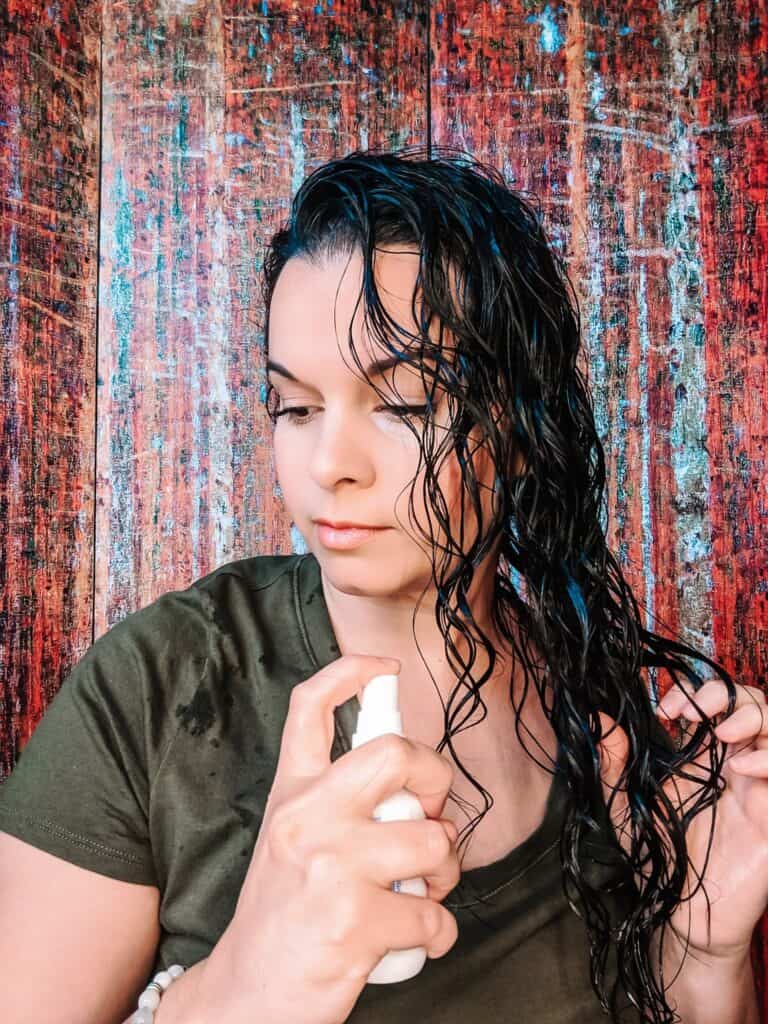
How to care for high porosity hair
- You want to make sure you deep condition on a regular basis, but don’t overdo it. I thought I needed to deep condition weekly because that’s what other curlies did but my hair could not handle it. After a few weeks, it was limp, stretched out, and dull. I cut back to once a month and my hair was happier. Also, don’t leave it in for too long. 5 minutes is enough for my hair so play around and find what works best for yours.
- Use a leave in conditioner.
- Be careful with heavy products which can weigh down your hair, especially if it is really thin. Oils and butters are great for moisturizing but too much can be too heavy for high porosity hair.
- Incorporate protein regularly. You can do protein treatments or use styling products with protein in them. I like to do rice water rinses 3-4 times per month to keep my moisture protein balance in check.
- Use a low poo or low suds shampoo and clarify on a regular basis to avoid buildup.
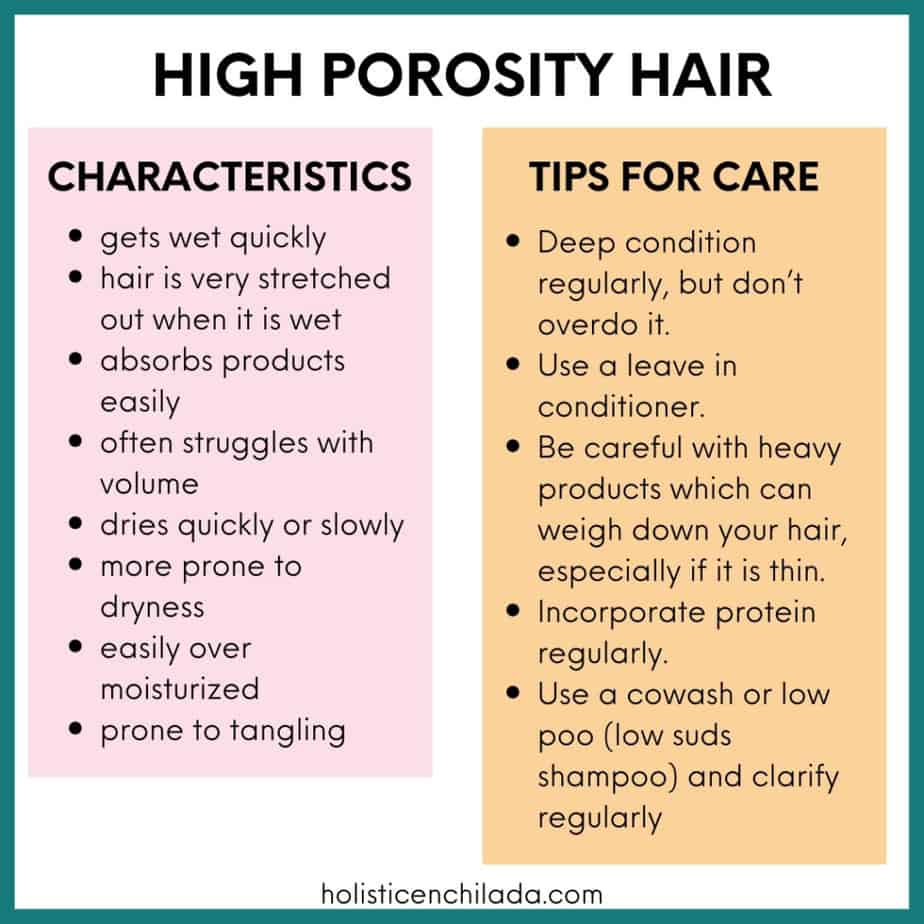
Read my post about my favorite high porosity hair products for fine curly hair.
Medium Porosity
Medium porosity, or normal porosity hair, is in between high and low because the cuticle is less open than high porosity but more open than low porosity. This hair type retains moisture more easily and requires less product and maintenance.
Characteristics of medium porosity hair:
- does not get wet immediately but only takes a few minutes to absorb water
- doesn’t dry quickly or slowly
- still looks curly when wet but the curls are stretched out a bit
- can be prone to build up, dryness, and over moisturization
How to care for medium porosity hair
- Deep condition regularly and use heat to help the cuticle open and absorb moisture. Keep an eye on your hair’s moisture level to avoid over conditioning. You may need to deep condition weekly or monthly.
- Keep protein in your routine to maintain balance, but it doesn’t need to be in your daily routine.
- Clarify on a regular basis to avoid buildup.
- Use a co-wash or low poo.
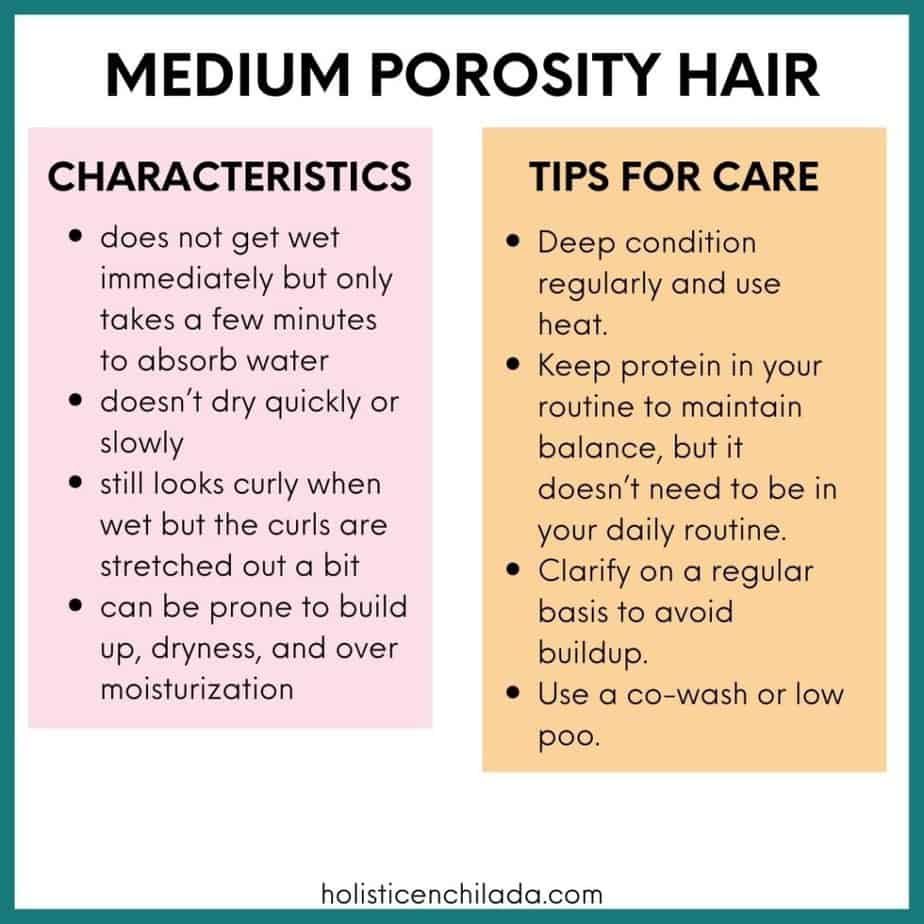
Low Porosity Hair
Low porosity hair has tight cuticles so it tends to repel moisture. Low porosity is more common in type 4 curls.
Characteristics of low porosity hair:
- takes a long time to get wet, sometimes even repelling water
- often looks almost exactly the same when it is wet
- does not absorb products
- is difficult to process
- can have a shiny appearance
- less prone to tangling
- very prone to build up since products sit on top of the hair
- can dry slowly or quickly
- prone to dryness since it does not absorb moisture like other porosities
Notice in the picture below that the woman’s hair is wet but it still looks curly. It looks almost the same as when dry because the hair is not absorbing water quickly. If this hair also check off some other low porosity characteristics then we know it is low porosity hair.

How to care for low porosity hair
- Deep condition when needed, and use heat to allow the cuticle to absorb moisture. This hair type will hold onto moisture longer so you may not need to deep condition as often.
- Clarify often to avoid buildup. Since products are not absorbed easily this hair type gets buildup the easiest.
- Be careful with protein. Low porosity hair likely needs less protein than other porosities so don’t overdo it.
- Avoid using heavy products with thick oils and butters which can cause build up.
- Use low suds shampoo instead of co-washing which can cause buildup.
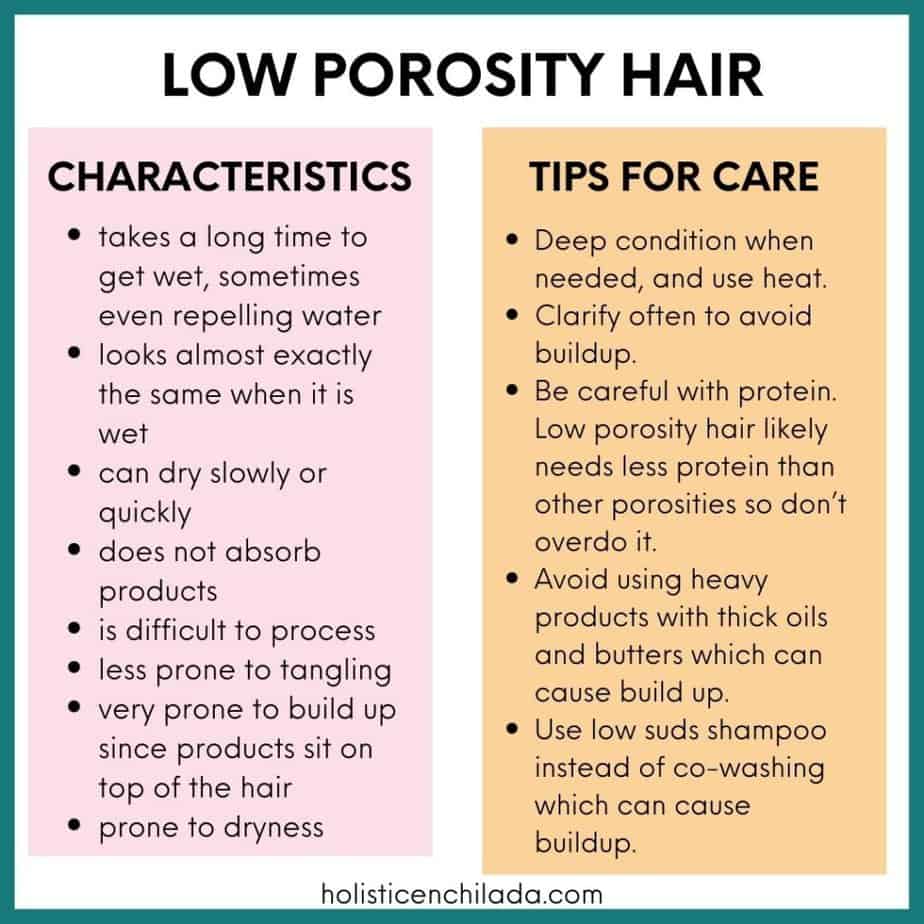
Damaged Hair
Both low and high porosity hair can be damaged with heat or chemical processing. In damaged hair, the cuticle does not work correctly.
Characteristics of damaged high porosity hair:
- damaged with heat styling and chemical processing
- gets soaking wet very fast
- absorbs products easily
- extremely dry
- can dry very fast or very slow because of the damaged cuticle or amount of water that has been absorbed
- has lost its former curl/wave pattern
- easily over-moisturized and weighed down because it absorbs too much moisture.
- tangles very easily
- very prone to frizz
- prone to breakage from being dry, over-moisturized, tangled, and weak
How to care for damaged high porosity hair
- Damaged cuticles cannot be fixed so you must cut off the damaged hair.
- Protein treatments help fill gaps as a temporary solution.
- Sealing your hair with oils and butters can help it retain moisture.
- Regular deep conditioning treatments will help moisturize hair. This hair type will probably need to deep condition most often since it does not retain moisture.
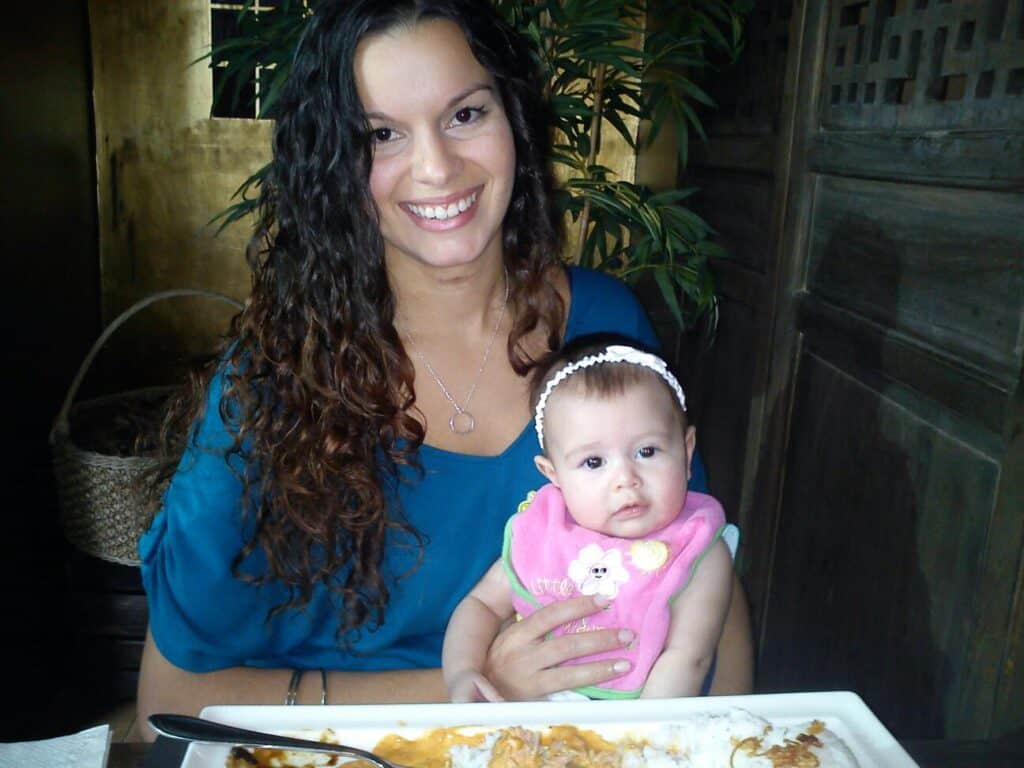
Characteristics of damaged low porosity hair
- hair used to be a lower porosity
- damaged by chemical processing
- extremely difficult to get wet and repels water
- doesn’t absorb anything without a lot of effort
- dries quickly because it doesn’t get very wet
- extremely dry and breaks easily
How to care for damaged low porosity hair
- Deep condition often with heat. Leave the deep conditioner on for a long time, but not overnight.
- Cut off the damaged hair.
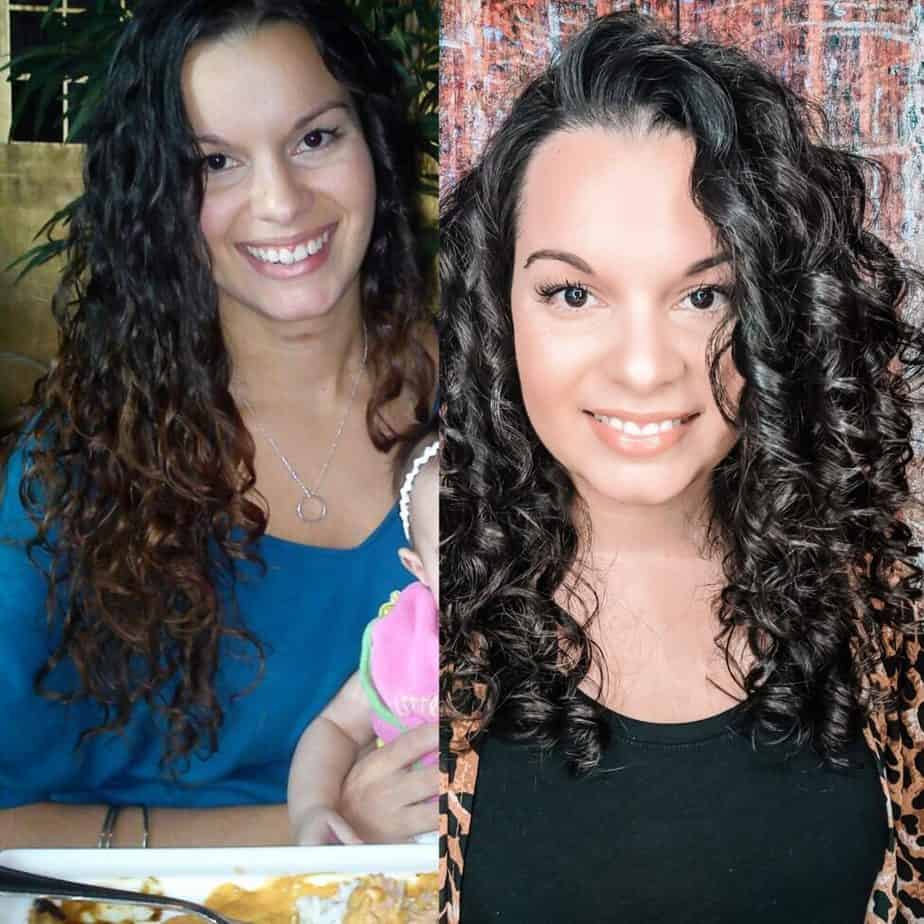
Some things to consider:
Hair porosity can change and you can have multiple porosities at once.
Once you know your type, analyze your current issues and try out different things to help balance your hair.
How much hair you have will also affect some of these characteristics. Having lots of hair affects your drying time and amount of product needed.
My hair is high porosity, fine, and low density. It gets wet quickly, dries in a normal amount of time, and isn’t prone to dryness. It needs some protein, light conditioner, and very lightweight products. It is more prone to over conditioning than it is to dryness. It gets weighed down very easily.
I figured all this out after lots of trial and error. So although it may not be what you want to hear, you have to play around with your routine and products to determine what’s best for your hair.
Bottom Line
It may take some time and effort but figuring out your porosity is not very complicated and can help you sort out your routine. But remember, it’s normal to have more than one porosity so don’t get too hung up on this. Think more about an overall approach to your hair.
Please do me a favor and share this post to social media, as it helps me grow my audience and spread the word about our curly hair movement! And remember to subscribe to my YouTube Channel for more curly hair tips and product recommendations. Thanks!
Want To Remember This? Save Ultimate Guide to Hair Porosity For Curly Hair To Your Favorite Pinterest Board!
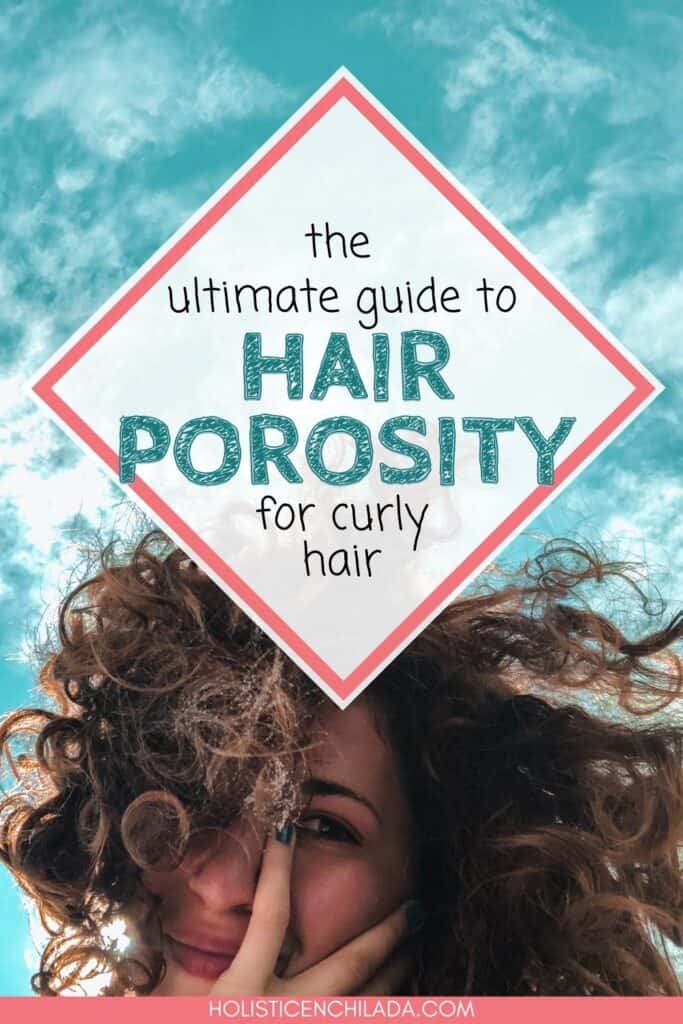
If you want help with embracing your naturally wavy or curly hair, you can join my FREE email course and download my FREE pdf guide, THE QUICK START GUIDE TO MASTERING YOUR CURLS, full of everything you need to know to get started and bring out your beautiful waves and curls.


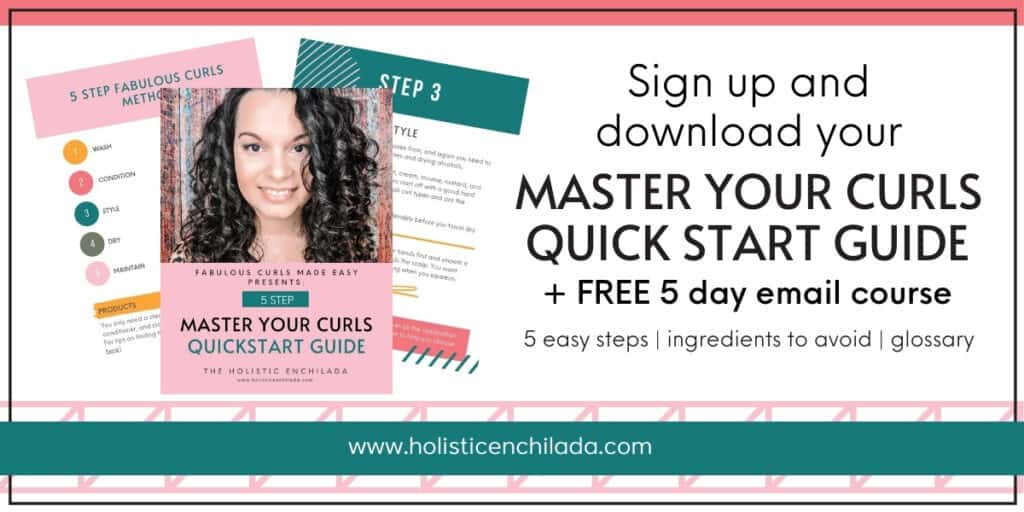
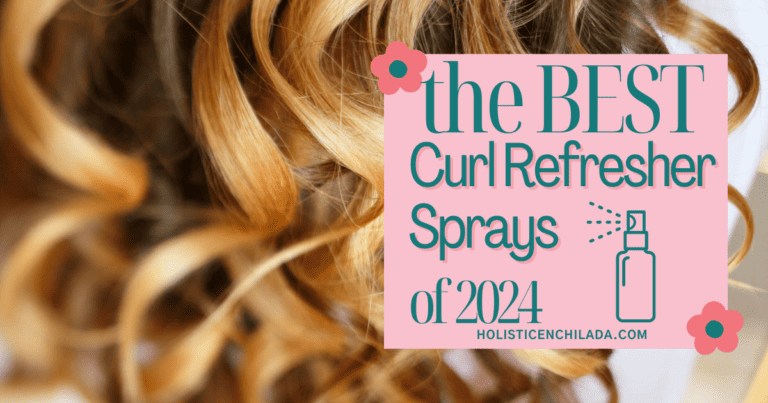
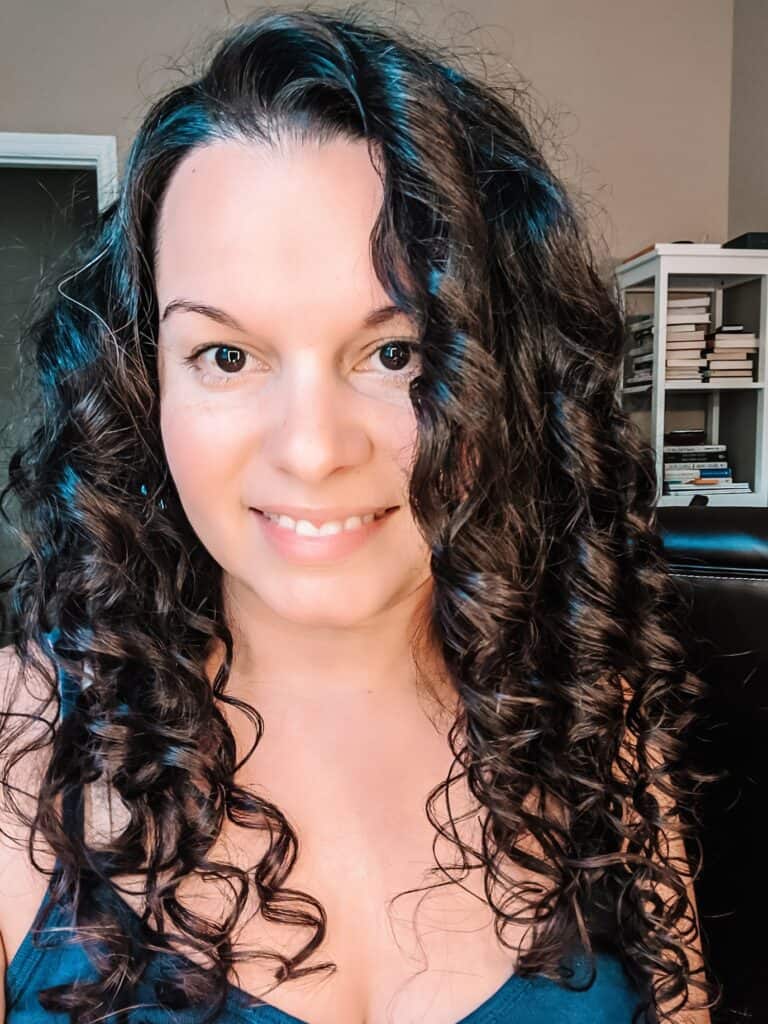
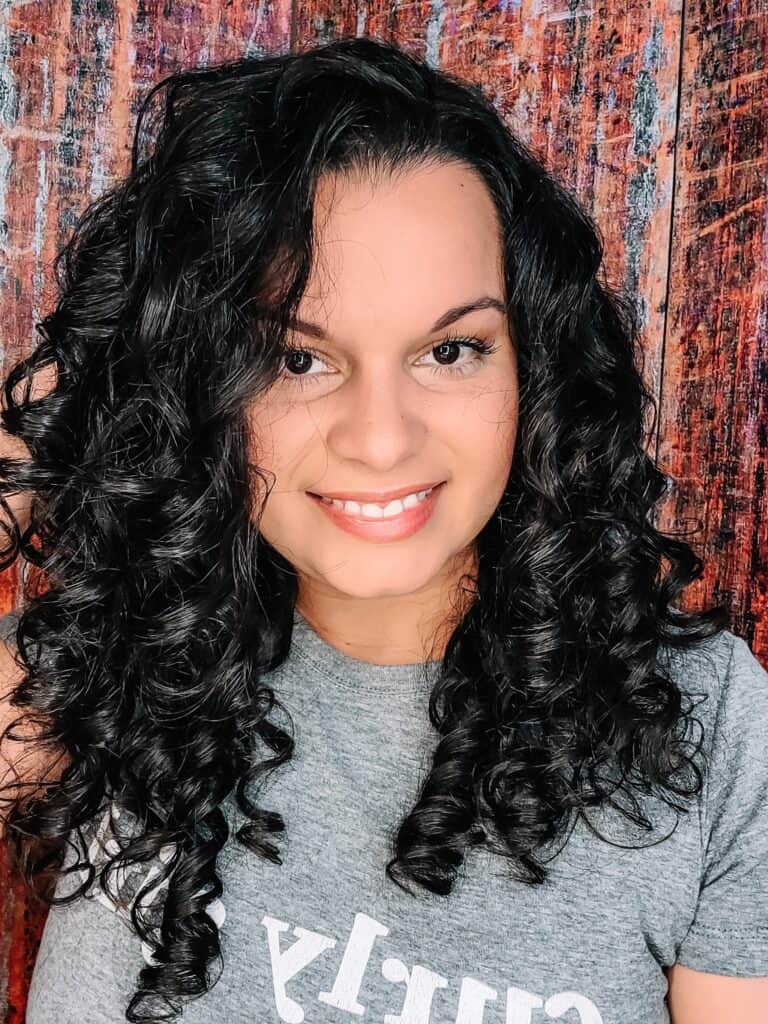
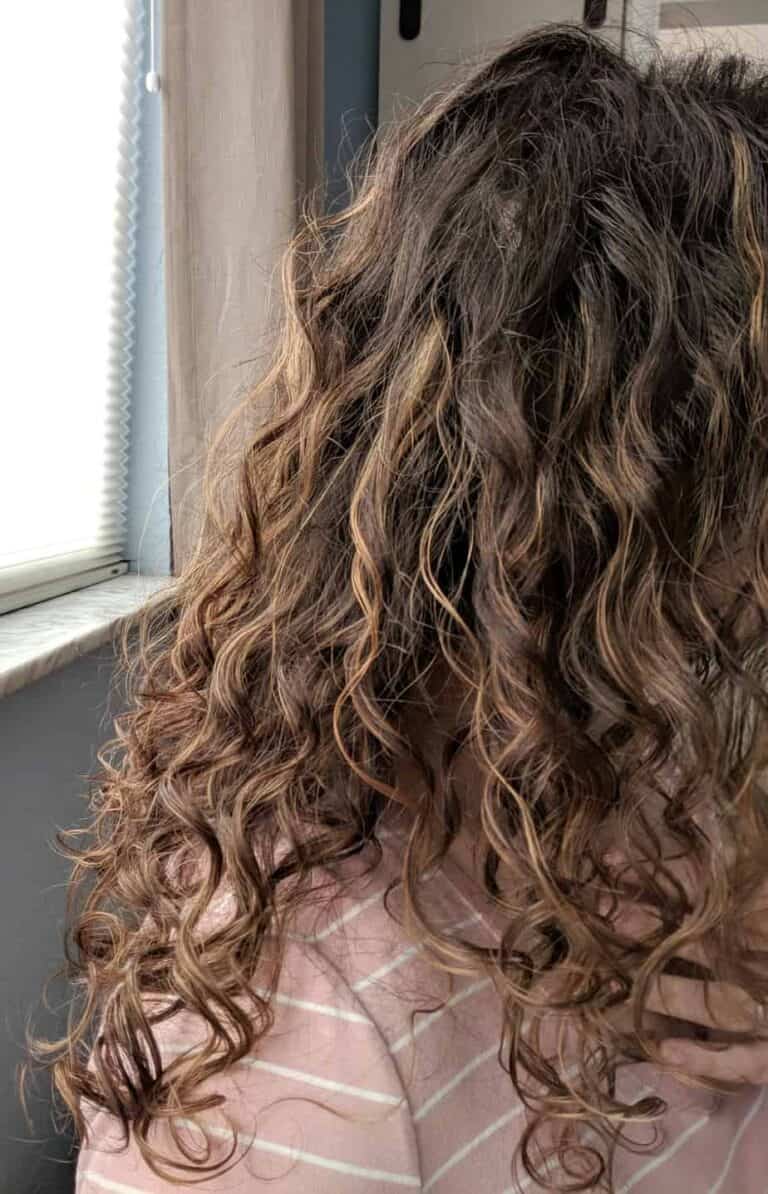
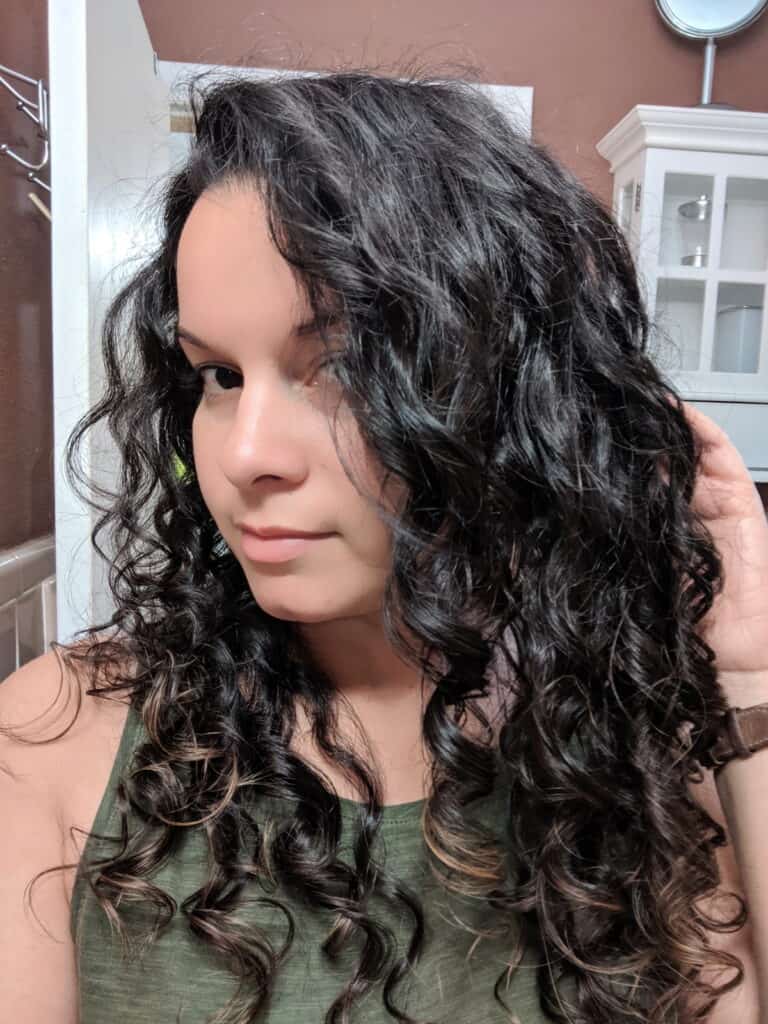

I am trying to change my curly hair routine and what I use without breaking the bank. What are the exact products you use? (Shampoo, conditioner, styling products, etc.)
Hi Delanie. First, please know that the curly girl method is more about application and hair care than it is about products. I find that I can use any line/product and achieve similar results because I know how to apply it for what MY hair needs. You will need to experiment with different techniques to find what works for you. But for your reference, I share the exact products I use in this post: https://holisticenchilada.com/high-porosity-hair-products-fine-curly-2b-2c-3a-hair/
I alternate between the a few brands depending on what my hair needs. If you are trying to save money I recommend the Giovanni brand. I am working on a review right now but I have shared the results on my Instagram and have been using the products for a few months now.
Just wishing you a Happy New Year ! Also, thank you for all your very hard work. You’ve helped me tremendously while going through my curly hair journey. I have the same type hair as you, only mine is much shorter. I’m a retired hairdresser and I’ve really enjoyed your straightforward approach to explaining and getting to the point in your explanations. You see so sweet and I just wanted to wish you a great new year and to please continue your much appreciated site.
Thank you so much Janet! I appreciate messages like this so much. Take care 🙂
This is so very helpful!!! Thank you! I think I have damaged hair with high porosity and naturally (if my hair was healthy) medium-high porosity. I, too, easily tend towards over-moisturizing, then it is terribly dry again quickly, especially on the outer/upper layers…. I will definitely come back and review this post (and the one on organic brands!) again! 🙂
So glad it was helpful 🙂
Hi Delilah, I’ve been following the CGM for several years, and your extensive and informative site is wonderful. Thank you so much, I’ve learned a lot!
i have straightened my hair for over 25 years! Now i have short hair. I want my curls back and i forgot how to do it! i have tried many gels to no affect. My hair gets wet in the shower very quickly, dries curly
and fast and frizzes too. what do i use? HELP! I WANT MY BEAUTIFUL CURLS BACK TO ROCK!
Hi Sally. It’s impossible for me to help you through comments. Read through my posts and consider some of my paid products to help you out.
What leave in conditioner would be good for 4a fine, high porosity, medium density hair?
Any of the lightweight options would work well.